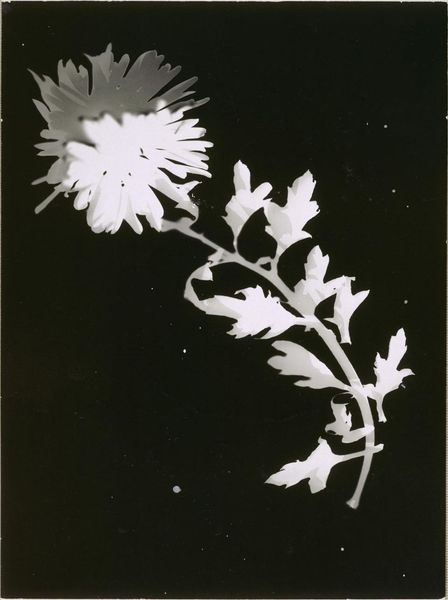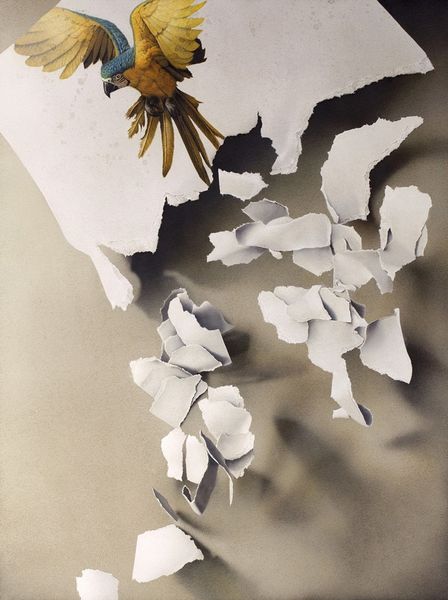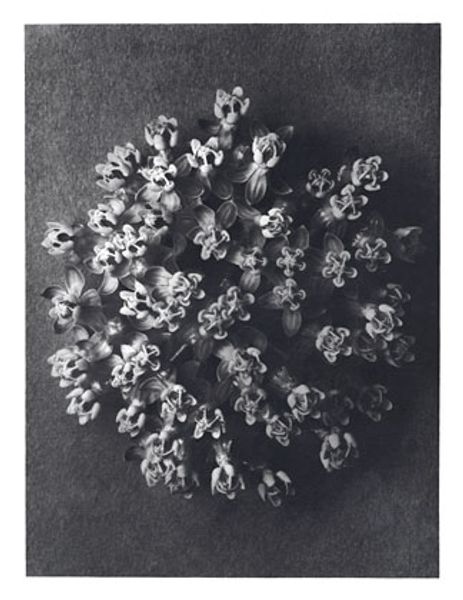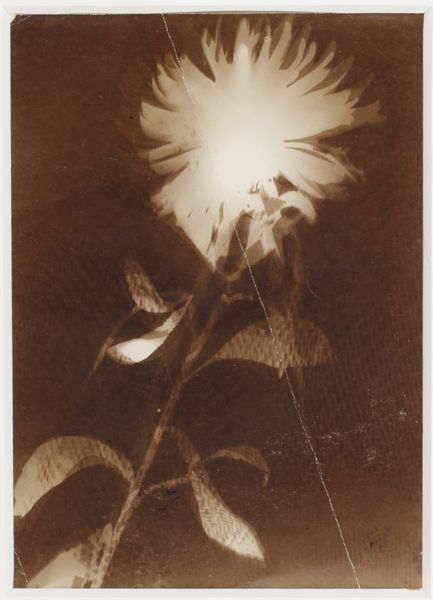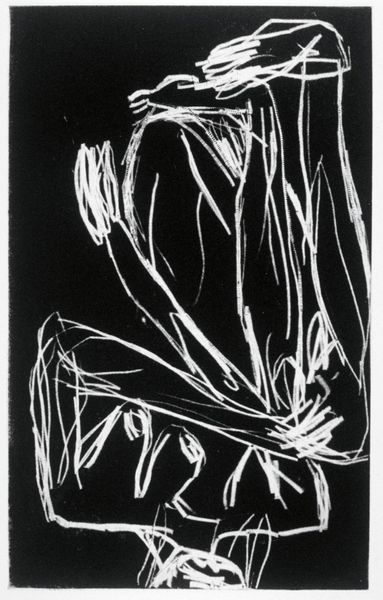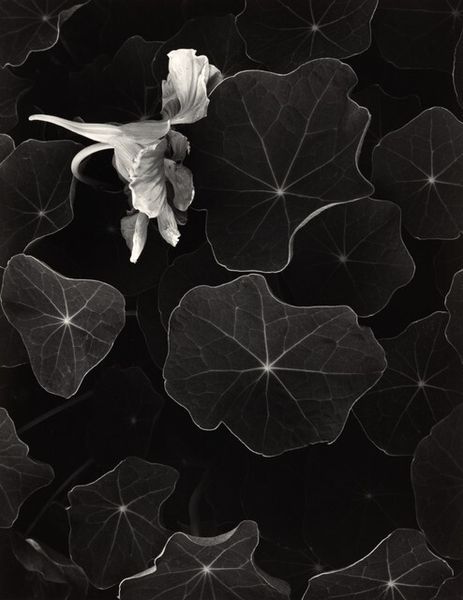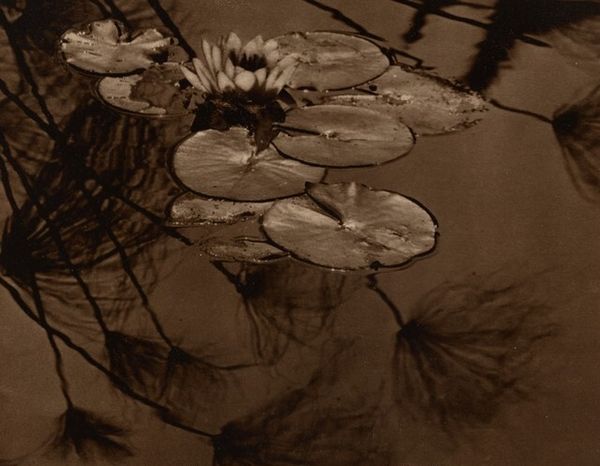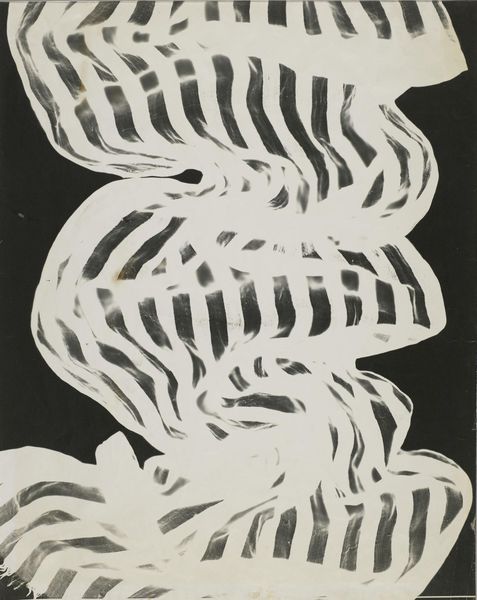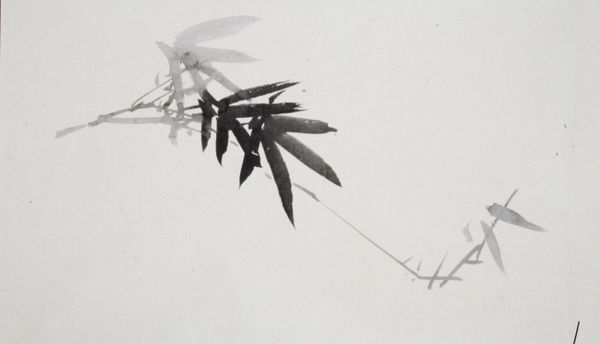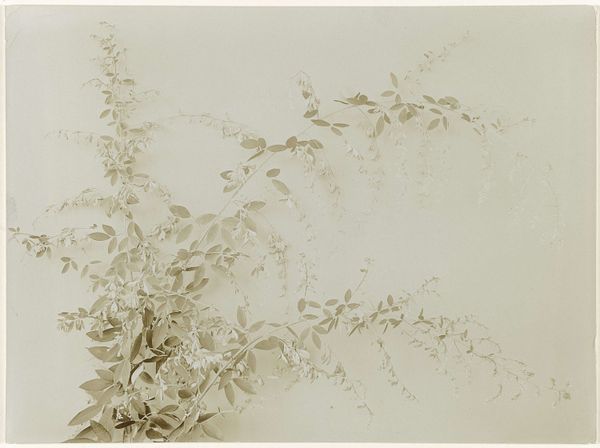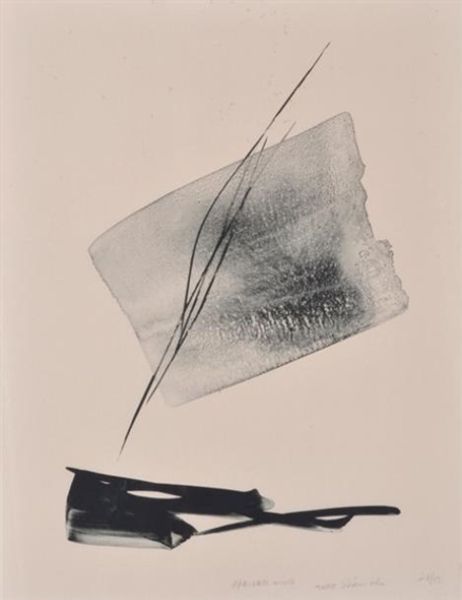
photography
#
still-life
#
still-life-photography
#
photography
#
monochrome
Copyright: Public domain
Curator: Let's discuss "Changing Patterns," a still-life photograph by László Moholy-Nagy. It offers such a unique interplay of light and form. Editor: My first impression is of high contrast, it’s a stark composition of plant life captured in monochrome, almost like an x-ray. Curator: Exactly. Moholy-Nagy’s embrace of photography was revolutionary. He understood the camera not just as a recording device but as a tool for exploring the properties of light and the socio-political climate. Think of his association with the Bauhaus and the school’s ethos of merging art, craft, and technology! Editor: Right, you see that play out in the production itself. The photogram technique—placing objects directly onto light-sensitive paper—sidesteps traditional photographic labor. The emphasis shifts from artistic skill to harnessing light and understanding materiality. This democratization breaks down elitist notions surrounding artistic skill. Curator: It's an incredibly radical departure. In still-life photography, he questions traditional artistic authority. Instead, the image reveals the hidden beauty of common, ordinary botanical subjects, thereby giving the still-life tradition itself a complete jolt. Editor: It’s also about accessibility. The process invites experimentation and making without expensive tools or formal training. The work challenges our conventional relationship to art by changing who can make it and how it is made. It puts artmaking into the hands of the people. Curator: Certainly. By presenting such images, he forces a reassessment of photographic conventions and artistic practice, which extends into art education. This work underscores the need to look closer, prompting societal change from the darkroom to daily life. Editor: Ultimately, it reveals that creative agency doesn’t reside solely in the hand of the artist, but in the confluence of material properties, light, and technology. Curator: Looking at Moholy-Nagy’s work through the lens of his Bauhaus commitments gives such insightful nuance, reminding us that the reach of any piece of art can be extremely expansive. Editor: Absolutely, and the focus on materiality forces us to re-evaluate our understanding of artistic process, labor, and agency. It's transformative.
Comments
No comments
Be the first to comment and join the conversation on the ultimate creative platform.
